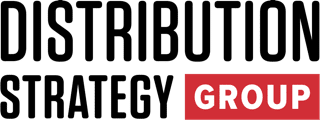Speaking at the Convenience Distribution Association last week, I shared my personal journey diving deep into large language models like ChatGPT and Claude. I’ve personally invested significant time into understanding these tools because I see their incredible potential to make our teams more efficient and frankly, better at what they do.
I’m living proof: I’m personally at least 35% more productive since incorporating these tools into my daily work. The analogy I like to use is would you cut your grass with a nail clipper when a better tool is available?
The Power of AI in Our Daily Operations
When I began exploring large language models (LLMs), I was struck by their versatility and ability to help me be more effective. What I learned is that these aren’t just fun to play with; they’re sophisticated tools that can transform how we handle everything from customer service to content creation.
What makes them particularly valuable is their ability to understand context and generate relevant, business-focused responses. I admit it took me a while to get there, but I see the vast potential in our industry if we deploy correctly.
What really caught the attention of the CDA audience was when I shared the current state of LLM adoption in our industry. ChatGPT leads with 63% adoption among distributors, while platforms like Gemini (5%), CoPilot (3%) and Claude (1%) are gaining ground.
But what’s truly telling is how we’re using these tools: 39% of users engage with them daily, 32% weekly and 11% monthly. This isn’t experimental usage; it’s becoming a core part of how we operate. Even if you think you have policies in place to limit your team from using them, I’ll let you in on a little secret – they are using them!
Real Applications That Matter
I focused on four key areas where I’ve seen these tools make the biggest impact:
1. Content Creation and Documentation
Teams spend hours drafting product descriptions, technical documentation and internal policies. Now, with LLMs, teams can generate high-quality first drafts in minutes, leaving more time for strategic work. The quality and consistency have improved, not just the speed.
2. Data Analysis and Research
When we were redesigning the Chicago market at Grainger, teams of analysts compiled data to help us determine where and how to expand. What once required thick binders and months of analysis can now be completed in hours using AI tools. I spent countless hours consulting with analysts to understand the data, but today I can simply “talk” with large language models to get equal or better insights. The key to success lies in knowing how to ask the right questions.
3. Customer Service Enhancement
One of the biggest wins is in customer service. Whether it’s drafting responses, creating FAQs or developing support documentation, these tools help maintain consistency while freeing time for more complex customer interactions. These tools can be built with most common scenarios in mind, and customer service reps can create emails in seconds.
Specific to the customer situation you can combine the transcript of a call with a large language model built for that scenario, and you’ve got the ability to create empathetic and consistent responses across the organization.
4. Administrative Efficiency
The daily grind of emails, meeting notes and routine documentation used to eat up hours of my day. Now, I use LLMs to generate first drafts and handle routine communications, saving significant time without sacrificing quality.
The Learning Curve: What Actually Works
From my hands-on experience and learning how others are using the tools, here’s what I’ve found makes the difference between success and frustration with these tools:
1. Clear Objectives First, Technology Second
The most successful implementations I’ve seen start with a specific problem to solve, not just a desire to use AI. You need to know what you’re trying to achieve before you can effectively use these tools.
2. Start Small, Scale What Works
I began with simple tasks like email drafting and gradually expanded to more complex applications. This approach allows you to build confidence and expertise while managing risks.
3. Focus on Enhancement, Not Replacement
These tools work best when they enhance human capabilities rather than try to replace them. I’ve found the sweet spot is using them to handle routine tasks while focusing human expertise on judgment, relationship-building and complex decision-making.
The Impact on Distribution
The enthusiasm in the room at CDA was palpable when we discussed what’s coming next. Early adopters in distribution can expect efficiency gains of 30% to 40% by 2030. I’m already seeing the beginning of this transformation in my own work, and the potential is enormous.
Industry research backs this up: McKinsey & Company reports that early AI adopters could see cash flow increases of up to 122%, while followers might gain only 10%. More concerning, late adopters face potential cash flow losses of 23%. These numbers represent real competitive advantages in our industry.
Practical Implementation Steps
Based on my experience here’s what I recommend for getting started:
1. Identify Your Entry Point
Choose one area where you need improvement. This could be content creation, customer service or administrative tasks. Start there and expand as you gain confidence.
2. Learn Prompt Engineering
Understanding how to effectively communicate with these tools makes a huge difference in the quality of results. It’s worth investing time in learning how to structure your requests. I highly suggest you use prompt generation tools. They’re just simply better than what we can create as humans.
3. Check and Adjust
With the CI training I’ve had, it is important to track your results and be prepared to adjust your approach based on what works. The initial learning curve might be steep, but the payoff is worth it. The first iteration with some of these tools will not be where you ultimately wind up so you have to check early and often.
4. Build Team Capability
The ability to find those people in your company who have a passion for using the tools will help your entire organization be better faster. The more people who understand how to use these tools effectively, the greater the organizational impact. The absolute most important thing as leaders you can do is to use the tools yourself. Lead the way for your teams.
Looking Ahead
The future of distribution will be shaped by those who can effectively use these tools while maintaining the human relationships and expertise that have always been at the heart of our industry. The distributors who gain a competitive edge will be those who learn to effectively integrate these tools into their operations while maintaining those relationships.
Large language models aren’t just another technology trend – they’re transforming how we work in distribution. The efficiency gains are real (that 35% productivity increase I mentioned isn’t theoretical; it’s my actual experience), and the potential for improvement is massive.
These tools are here to stay, and they’re only getting better. The question isn’t whether to adopt them, but how to implement them effectively to stay competitive. The opportunity is here, and the time to act is now. Those who thoughtfully and strategically embrace this technology will find themselves well-positioned for the future.
Learn what’s possible and develop your AI roadmap for 2025 and beyond. Join us at Applied AI for Distributors. Get the details.
As Chief Operations Officer of a Distribution Strategy Group, I'm in the unique position of having helped transform distribution companies and am now collaborating with AI vendors to understand their solutions. My background in industrial distribution operations, sales process management, and continuous improvement provides a different perspective on how distributors can leverage AI to transform margin and productivity challenges into competitive advantages.

